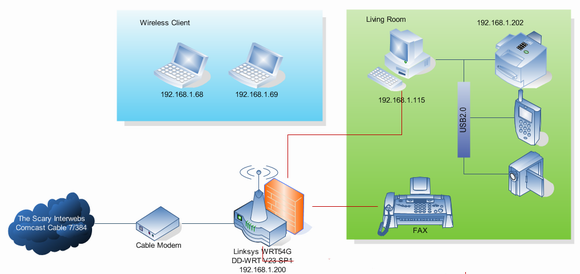LANs (Local Area Networks) are the networks that you see in most offices, schools and some homes. They usually need the following hardware in order to operate: 1) A Network File Server is a dedicated computer that runs the software needed by the network and stores the files that users have created. 2) Terminals are individual workstations that give access to the network. Using a terminal gives access to the network’s software and files. 3) If a group of terminals share use of a printer then the system needs a Print Server. If two or more documents are sent to the printer at the same time the print server will put them into a queue. Users can then carry on with other work whilst waiting for the document to be printed. 4) For the network to operate data needs to be sent to and from all parts of the network. This can be done using wire cables or fibre optic cables, or via radio signals.

Note — a LAN doesn’t have to include a server. LANs can be as simple as two or three computers linked together for the sharing of files or software.
WANs are long range Networks

1) WAN is short for Wide Area Network. They are used when the computers that need to be connected together are in different places. 2) Like LANs, WANs need servers to operate the network, but users connect up to the network using modems, usually connected to the telephone system. Wireless technology such as microwaves or satellite can also be used. 3) WANs are used by companies who have employees working away from the firm’s main sites. A good example would be oil exploration engineers who work in remote parts of the world. They’re also used by firms who have a lot of teleworkers.